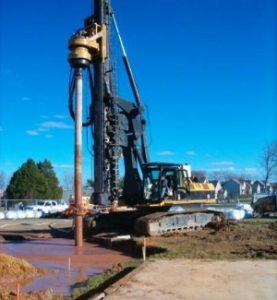Per- and Polyfluoroalkyl Substances (PFAS)
PFAS are highly persistent chemicals that occur in numerous consumer products, industrial applications, and aqueous film-forming foams (AFFFs). Our work is aimed at advanced analysis of PFAS in the environment and the development of technologies and treatment trains that lead to their destruction. We are using a dedicated LC/QQQ-MS for their accurate quantification, an LC/QTOF-MS for non-targeted analysis of precursor compounds and transformation intermediates, and ultrahigh-resolution FT-ICR MS in collaboration with the National MagLab for environmental forensics. We study their breakdown via electrochemical oxidation, sonolysis, incineration, and biotransformation, and combine these technologies with pre-concentration approaches such as nanofiltration or sorption to increase (cost-)efficiency and overall sustainability. We also apply quantum chemical models to unveil reaction mechanisms, kinetics, and pathways.
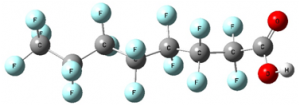
Computational Chemistry
Our environment contains thousands of poorly characterized contaminants out in the environment. Instead of spending large amounts of time and money through experimental studies, we are conducting quantum chemical calculations to elucidate contaminant reactivity. Using powerful supercomputers, degradation pathways, kinetics, mechanisms, and necessary redox conditions can be determined theoretically with high accuracy.
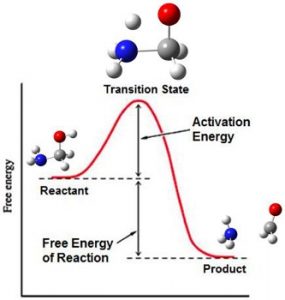
Cryogenic Coring and High-Throughput Core Analysis
Over the past decade arguments have grown louder that we need to rethink site characterization to get remediation right. The well-known limitations of monitoring-well-based and high-resolution strategies provide a basis for advancing novel site characterization strategies centered on cryogenic coring and high-throughput core analysis (HTCA). NAPL-contaminated frozen cores are generated in both lab and field, and analyzed using modern scanning techniques such as nuclear magnetic resonance (NMR), computerized tomography (CT) scans, and ultrasound. The overarching goal of this approach is to provide more accurate site characterization data sets that would support more efficient site remedies, while reducing sampling unit cost at the same time.
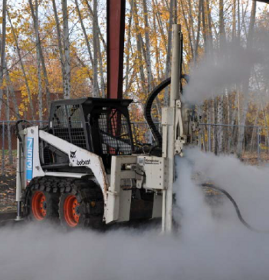
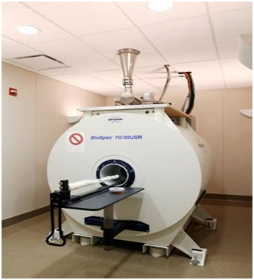
Electrolytic Treatment
Contaminant degradation is all about electron transfer. Instead of relying on chemicals or bacteria to transfer electrons, electrolytic treatment uses a direct current applied to porous mixed metal oxide-coated titanium electrodes. Various lab- and field-scale demonstrations have proven both technical and economical feasibility of this technology for a wide variety of chemicals, such as chlorinated solvents, explosives, flowback from hydraulic fracturing, and other contaminants. Electrolytic treatment can be designed as permeable reactive barrier (e-barrier), batch or flow-through reactor, and can be combined with catalyst or sorbent as inter-electrode material.
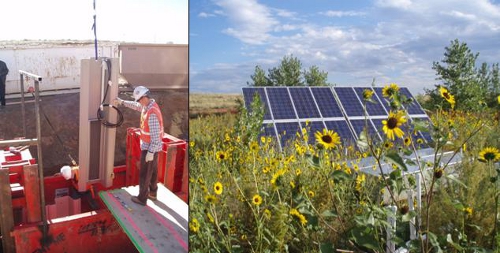
Environmental Impacts of Hydraulic Fracturing
Hydraulic fracturing is the process of propagating fractures in rock or shales to enable or enhance natural gas or petroleum extraction. The use of chemicals in the fluids injected into the subsurface has raised public concern about potential contamination of surface and ground water. To address these concerns and help ensure a clean, safe and sustainable extraction of our natural energy resources, we are developing analytical methods for hydraulic fracturing chemicals and investigating their fate under environmental and down-hole conditions.
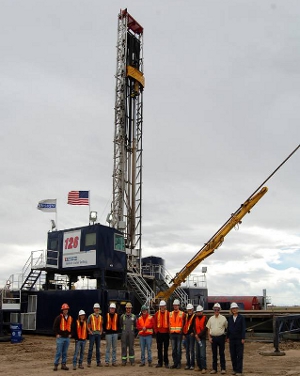
LNAPLs at Groundwater Surface Water Interfaces (GSIs)
CSU is conducting ongoing r
esearch to investigate petroleum releases and migration. This project explores the efficacy of using capillary barriers and organoclay barriers to preclude LNAPL migration to GSIs. The three downloadable movies provide a unique visualization of capillary and organoclay barriers. (Developed by Alison Hawkins, Dr. Julio Zimbron, and Dr. Tom Sale, 2012).
Low-k Zones
Low permeability zones can act as a secondary source of chlorinated solvents in transmissive zones for decades after the primary source has been removed or isolated. Unfortunately, limiting releases of chlorinated solvents from low permeability zones can be challenging.
Persistent Contaminants
Our environment holds a multitude of persistent contaminants in the environment. Many of these contaminants are hydrophobic and relatively immobile (such as PCBs). Others are hydrophilic and may travel great distances (such as PFOA or 1,4-dioxane). One branch of our research is dedicated to developing innovative approaches to treat persistent contaminants, either through degradation or sequestration.
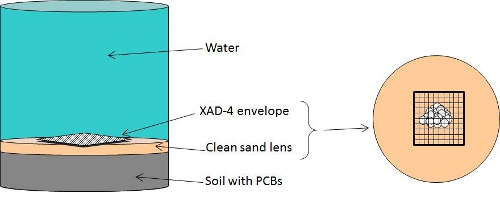
Processes Governing Releases of Sheens from Porous Media
A large portion of petroleum impacted sites abut surface water, due to logistic and historical reasons. Petroleum hydrocarbon sheens in surface water provide a strong visual indication of petroleum release into the environment. The purpose of our research is to provide a fundamental understanding of the mechanisms that drive the generation of sheens from non-aqueous phase liquids (NAPL). Our aims are to use this understanding as a decision-making tool for the management of hydrocarbon impacted sites and as the basis for developing improved solutions.
Our experiments include laboratory-scale tanks and fluorescence-based flow visualization techniques. We have tested the effect of tides on the spreading of sheens in groundwater, the effects of heterogenities in soils, and the development of solutions identified to stop the spreading of sheens in groundwater.
The solutions developed in our research include the use of capillary and oleophilic barriers. Capillary barriers are made of water wetting materials (i.e., quartz sand) with smaller pores than the native soils. Oleophilic barriers consist of materials that are preferentially oil wetting. When an oil sheen enters the wall, it changes from an intermediate wetting fluid into a true wetting fluid, stops spreading as a thin film, and sorbs to the oleophilic porous media. Our current efforts are focused towards field testing these technologies.
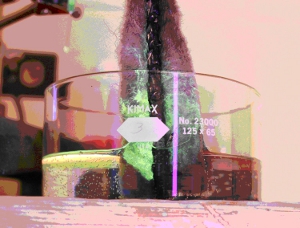
ZVI-Clay Soil Mixing is an in situ treatment technology for remediation of chlorinated solvent source zones. Through the use of conventional soil mixing techniques, reactive zero valent iron (ZVI) and stabilizing agents (e.g., bentonite) are admixed with soils impacted with chlorinated solvents. ZVI drives contaminant degradation, while stabilizing agents reduce hydraulic conductivity of treated soils. Through use of soil mixing, to deliver reactive materials into contaminated soils, the reactant is well-distributed throughout the treated soil body and brought into close contact with all contaminant mass. Furthermore, by combining contaminant mass reduction with reduced groundwater flow, ZVI-Clay can achieve a multiple-order-of-magnitude reduction in contaminant discharge from treated soils. This technology is well-suited for remediation of high-concentration source zones, including those containing chlorinated solvent DNAPL.
